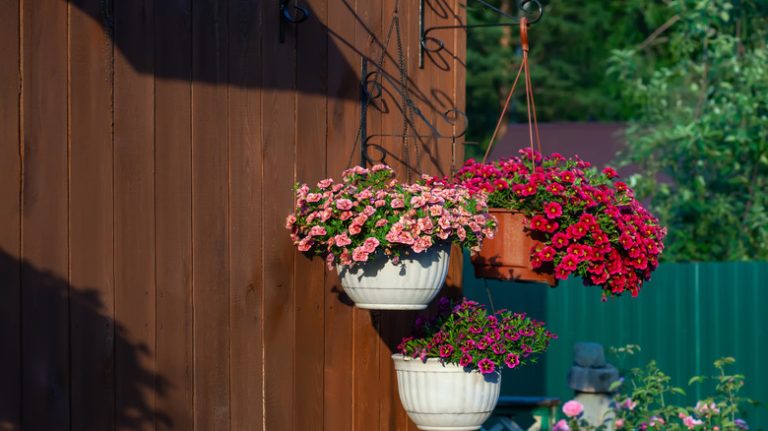Late fall may not seem like the best time to plant anything. The weather is cooler, and the ground becomes harder as winter approaches. Yet skipping the late fall planting season would prevent you from enjoying beautiful flowers, tasty fruits, and vegetables. November may mean dropping temperatures, but there are a variety of plants that like the chilly air. Some bloom by the end of November, and others begin to grow so they may blossom when spring comes.
Fall is actually a suitable time to plant many spring-blooming plants. Planting before the first frost date is essential for a vibrant garden after the last frost date. When planning a fall garden, it’s important to consider your region and the typical temperatures. Consulting you local planting calendar for guidance on what to plant and when. Some plants do better when started indoors, while others can grow directly from seeds in your garden.
1. Pansies
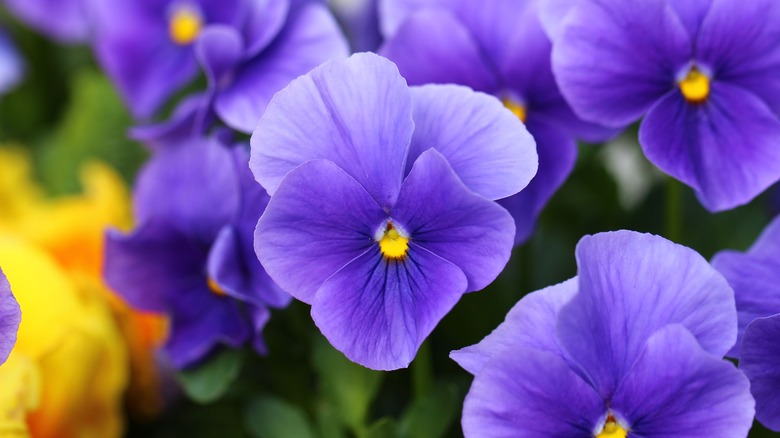
Pansies (Viola tricolor) are vibrant winter-hardy flowers that come in a variety of colors. They thrive in cool weather and should be planted where they’ll receive sun in the early hours of the day but are shaded when temperatures get higher. Plant them in the fall or spring for the best results. For spring planting, you can start them indoors during the winter and transfer them outside come spring.
Bloom Season: Late fall, early spring
USDA Growing Zone: 2 to 9
Growing Conditions: Full sun, partial sun
Soil Type: Slightly acidic to neutral
Size: 6 to 9 inches tall
2. Camellias
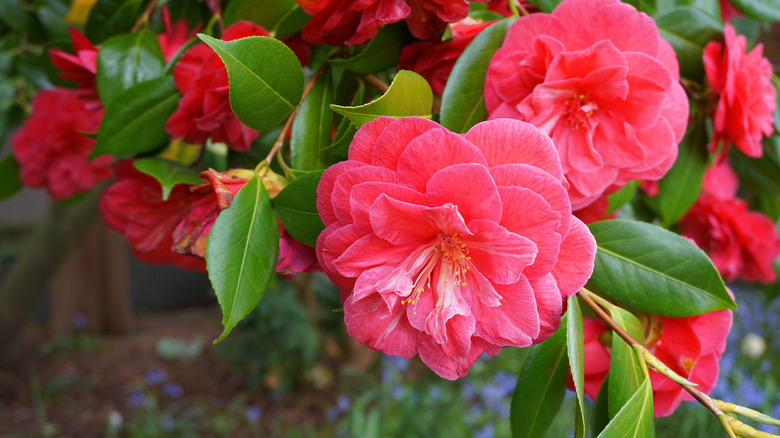
If you love showy plants, consider the stunning camellia (Camellia asanqua), an evergreen shrub with over two hundred varieties. The flowers differ in shape from whimsical peony-like petals to the perfect layers of the double formal variety. Plant camellias in November to enjoy them throughout the late fall, winter, and spring, depending on the species. For example, cold-hardy camellias like the Polar Ice variety will not last as long as Spring Mist camellias.
Bloom Season: Fall, winter, spring
USDA Growing Zone: 6 to 9
Growing Conditions: Partial sun, shade
Soil Type: Acidic, neutral
Size: 2 to 20 feet tall
3. Tulips
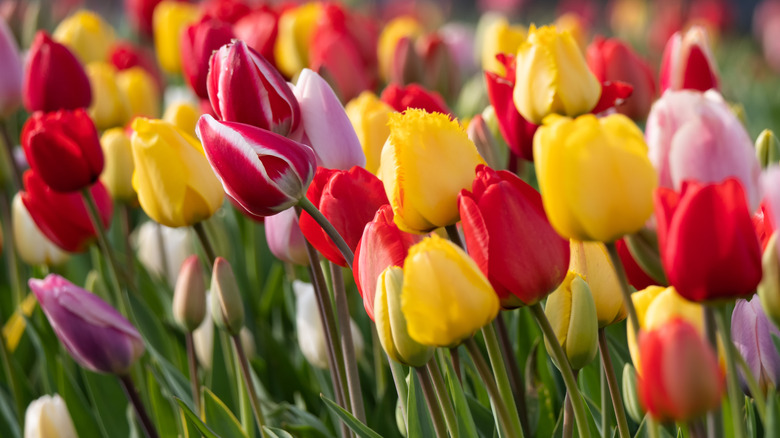
Andrea Kraus-wirth/Getty Images
Planting tulips (Tulipa spp.) in November is the best way to have a colorful winter and spring. These flowers bloom and thrive in cold weather. Frost may stunt their growth but will not harm tulips. Try to plant them about six weeks before the first major frost. Once established, tulips can be treated like annuals, and you’ll be able to enjoy them year after year.
USDA Growing Zone: 3 to 8
Growing Conditions: Full sun, partial sun
Soil Type: Neutral
Size: 6 inches to 2 feet tall
4. Daffodils
Kurt Vansteelant/Shutterstock
Daffodils (Narcissus spp.) are known for their appearance, color, and pleasant scent. You can plant them about two to four weeks before the first frost for late winter and early spring blossoms. They’re easy to grow in most regions but struggle in the hottest areas. If you want the famous yellow daffodil, choose the Dutch Master. For the white flowers with the orange centers, pick Barret Browning daffodils.
Bloom Season: Late winter, early spring
USDA Growing Zone: 3 to 9
Growing Conditions: Full sun, will tolerate partial sun
Soil Type: Acidic, alkaline, neutral
Size: 3 to 6 inches
5. Hyacinths
Belevantseva/Getty Images
Planting hyacinths (Hyacinth orientalis) in the fall means beautiful blossoms in the spring. The bulbs need cold temperatures to sprout and will remain dormant until their temperature requirements are met. Hyacinths come in many delicate colors like purple, pink, soft blue, and white. Plant them somewhere with direct sunlight before the first frost, and keep them moist for the best results.
Bloom Season: Spring
USDA Growing Zone: 3 to 9
Growing Conditions: Full sun
Soil Type: Acidic, neutral
Size: 6 to 12 inches tall and 3 to 6 inches wide
6. Roses
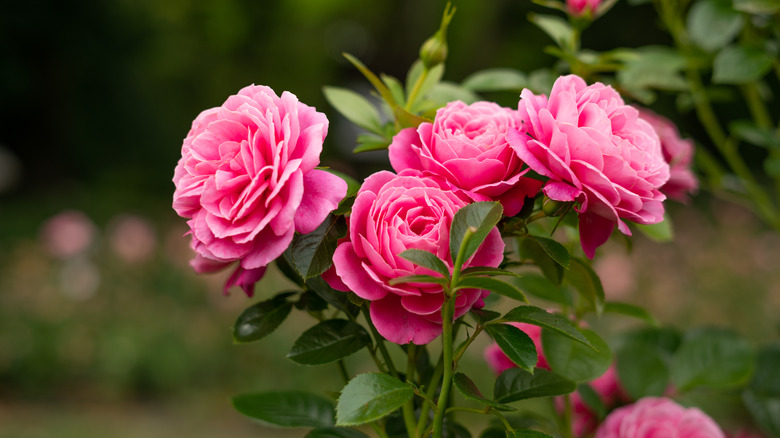
Maryia Kulinskaya/Getty Images
Popular and timeless, rose bushes (Rosa rubiginosa) are a great addition to your garden. Green thumbs in warmer regions can plant bare-root starters in November before temperatures drop. Roses need full sun and winter protection like mulch. Mulch insulates the soil at the right temperature for the roots below. With the right care, roses will bloom throughout the year.
Bloom Season: Spring, summer, fall
USDA Growing Zone: 5 to 9
Growing Conditions: Full sun
Soil Type: Acidic to neutral
Size: 6 to 12 inches
7. Japanese Maple
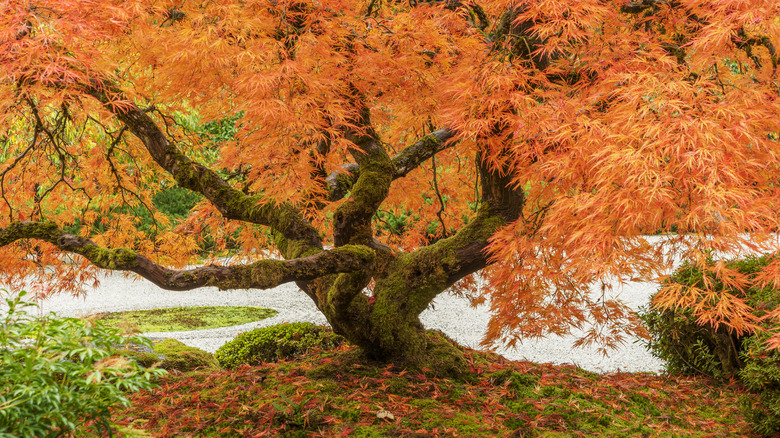
Garysfrp/Getty Images
Plant lovers wait all year to see the rich color change of the Japanese maple tree (Acer palmatum). The leaves can be yellow, orange, red, and purple throughout the fall. The Japanese maple is equally impressive when it blooms vibrant green leaves in the spring. Fall is a great time to plant these trees. Though they can withstand chillier temperatures, they should be protected from strong, cold winds and frost.
Bloom Season: Spring
USDA Growing Zone: 5 to 8
Growing Conditions: Partial sun
Soil Type: Acidic
Size: 15 to 25 feet
8. Broccoli
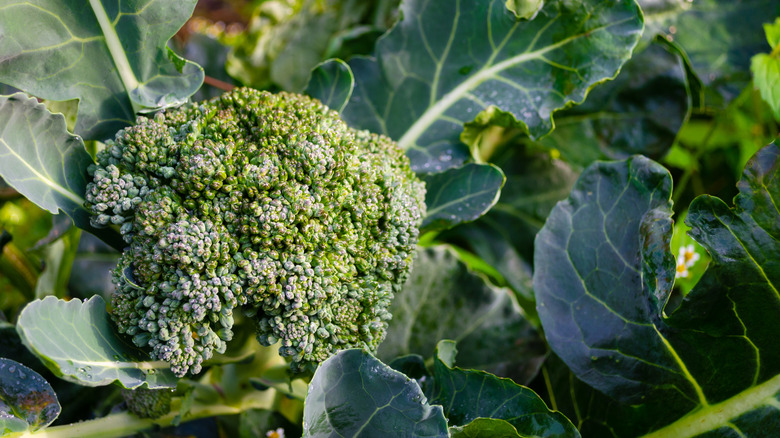
Luka Pollak/Getty Images
Broccoli (Brassica oleracea) is a cruciferous vegetable that’s high in vitamins and relatively easy to grow. If you live in one of the warmer regions, zones 8 through 10, you can plant broccoli in the fall once temperatures drop. Varieties like Spring Raab and Green Magic can be started indoors earlier in the year and then transplanted outside when the air is cool.
Bloom Season: Winter
USDA Growing Zone: 2 to 10
Growing Conditions: Full sun
Soil Type: Slightly acidic to neutral
Size: 6 to 12 inches wide
9. Lettuce
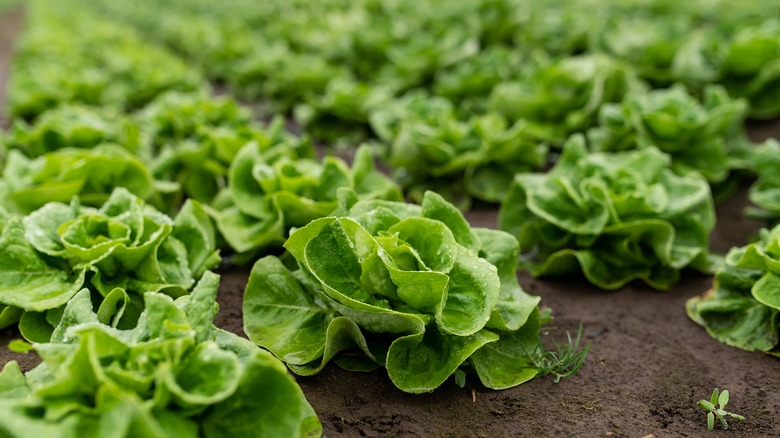
Pavle Bugarski/Shutterstock
Lettuce (Lactuca sativa) is a beginner-friendly vegetable that can be planted in the early fall. Many lettuce varieties do not tolerate extreme heat or freezing temperatures, but some do. If you live in colder regions, consider planting butterhead cultivars like Winter Marvel, Arctic King, or North Pole lettuce, as they can withstand frost.
Bloom Season: Year-round, but has difficulty in the summer
USDA Growing Zone: 2 to 11
Growing Conditions: Full sun, part sun
Soil Type: Slightly acidic to neutral
Size: 6 to 12 inches tall and wide
10. Cabbage
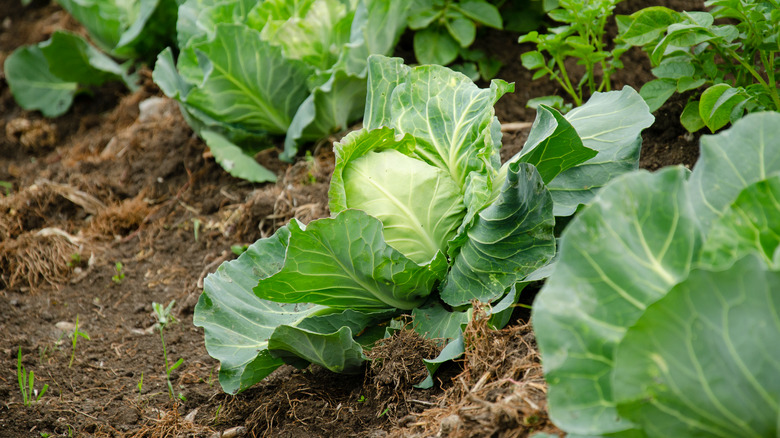
Wipat Boonkaew/Shutterstock
Unlike lettuce, cabbage (Brassica oleracea var. capitata) is a leafy green that can withstand moderate freezes and temperatures as low as 20 degrees Fahrenheit. Cabbage should still be planted before the ground freezes; otherwise, it will struggle to establish itself in the soil. Planting seedlings in the fall will make for a successful spring harvest. Adding mulch or cloth will protect your vegetable garden from freezing temperatures.
Bloom Season: Late fall, winter, and spring
USDA Growing Zone: 2 to 11
Growing Conditions: Full sun
Soil Type: Neutral
Size: 1 to 2 feet tall and wide
11. Garlic
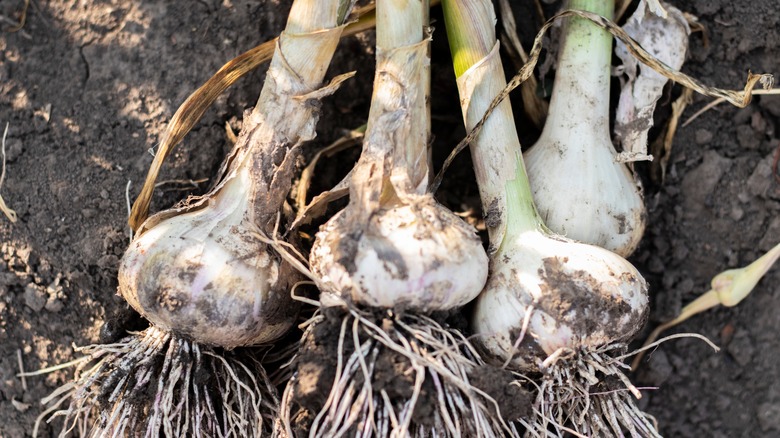
Yevhen Roshchyn/Shutterstock
Garlic (Allium sativum) lovers rejoice. You can grow this delicious herb from cloves or seeds. Known for its medicinal properties, garlic should receive a permanent spot in your garden. Plant it in November for a summer harvest. Planting them before the ground freezes helps the roots develop and grow strong. A layer of mulch will also protect your garlic from frost.
Bloom Season: Summer
USDA Growing Zone: 3 to 8
Growing Conditions: Full sun
Soil Type: Acidic, neutral
Size: 1 to 2 feet tall
12. Thyme
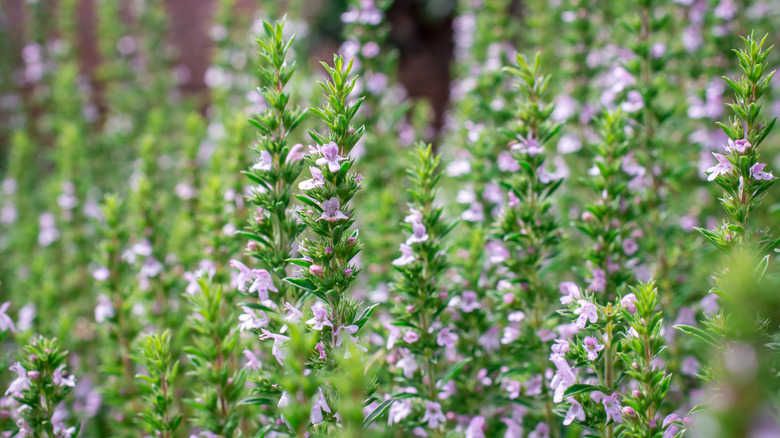
Ana Lebiodiene/Getty Images
Like garlic, you can also plant this tasty herb in November. Thyme (Thymus vulgaris) is easy to grow and serves well as a companion plant to cabbage. They tolerate warm temperatures and thrive in full sun but will tolerate partial sun. It does best in warmer regions, but a layer of mulch will help insulate heat during the colder months.
Bloom Season: Summer
USDA Growing Zone: 5 to 9
Growing Conditions: Full sun, partial sun
Soil Type: Acidic, alkaline, neutral
Size: 6 to 12 inches
13. Spinach
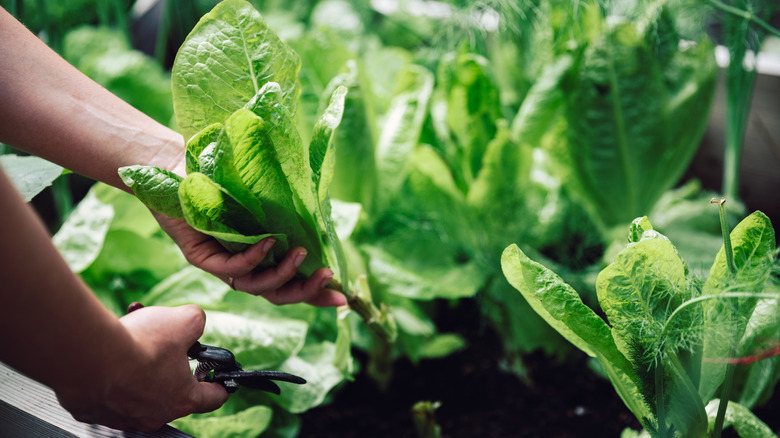
Alvarez/Getty Images
Spinach (Spinacia oleracea L.) is another cool-weather green that you can plant in November. It is hardier than lettuce and can withstand frosts throughout winter and early spring. Plant spinach six to eight weeks before the first frost to let them establish for future harvesting. Spinach does best when temperatures do not exceed 70 degrees Fahrenheit.
Bloom Season: Late winter, early spring, or late summer after temperatures have cooled
USDA Growing Zone: 5 to 8
Growing Conditions: Full sun, tolerates partial shade
Soil Type: Neutral
Size: 1 to 12 inches tall and up to six inches wide
14. Onions
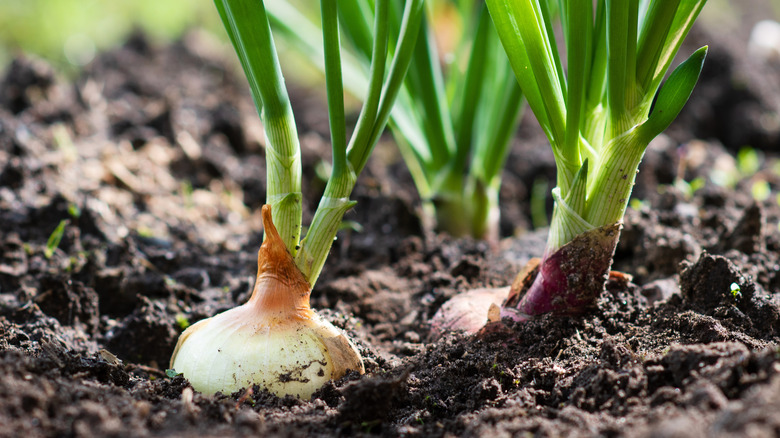
Nikita Burdenkov/Getty Images
Warmer regions can plant onions (Allium cepa) in November if the temperatures allow it. Onions grow best in cool temperatures but struggle in cold temperatures. If you plant onions late in the year, it’s best to start them with bulbs instead of seeds, which will take longer to germinate and grow.
Bloom Season: Late winter, early spring, or late summer after temperatures have cooled
USDA Growing Zone: 5 to 8
Growing Conditions: Full sun, tolerates partial shade
Soil Type: Neutral
Size: 1 to 12 inches tall and up to six inches wide
15. Asparagus
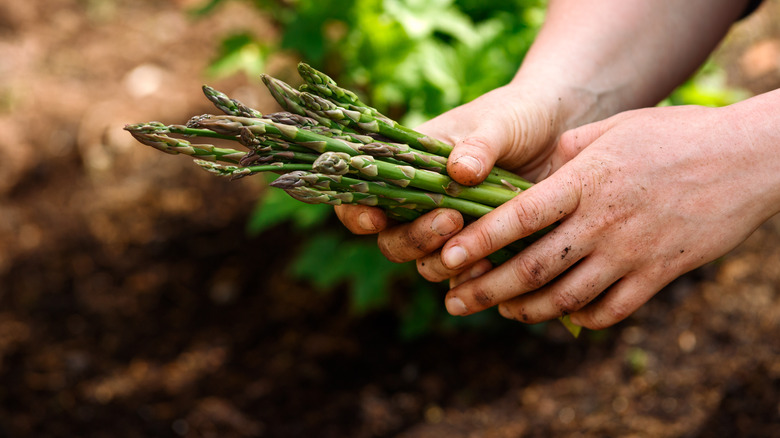
Maksims Grigorjevs/Getty Images
Planting asparagus (Asparagus officinalis) in your garden is brilliant if you love this healthy vegetable because it can grow and regrow for decades. Though it takes some time to establish, you can plant seeds or crowns in the fall. Planting crowns will speed up the growing process. Mulch the garden bed for insulation and to get the best results.
Bloom Season: Spring
USDA Growing Zone: 4 to 9
Growing Conditions: Full sun
Soil Type: Slightly acidic, slightly alkaline, neutral
Size: 4 to 8 feet if left unharvested
